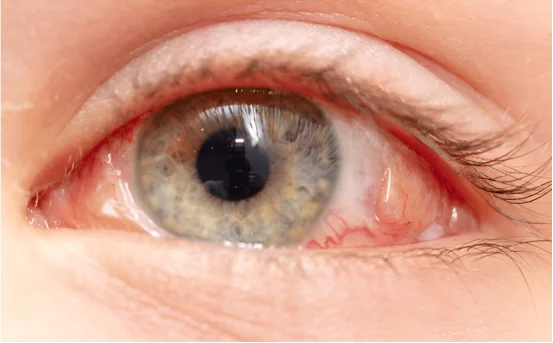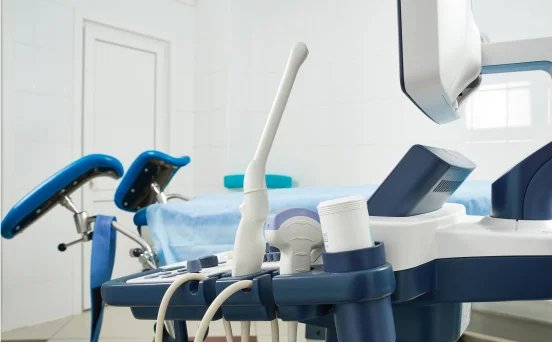Retinal detachment is an eye condition that can result in irreversible vision loss if not treated in a timely manner. It occurs when the retina, which is a thin layer of tissue at the back of the eye that senses light, pulls away from the back of the eye. This surgery is done specifically to fix the detachment of the retina and is thus called as retinal detachment surgery.
Why is Retinal Detachment Surgery Important?
Understanding of the what is retinal detachment surgery
When the eye sustains an injury, the retina separates from the surrounding tissues. This disconnects the retina from the blood vessels which serves it with oxygen and nutrients. Hence the retinal cells die, which can result in permanent loss of vision.
Retinal detachment surgery is crucial because:
- Vision can be regained: If the surgery is performed in a timely manner, the retina can be reattached followed by restoration of vision.
- Preventing complication: An untreated retina detachment can result in severe complication such as glaucoma, macular holes, complete blindness and many others.
- It assists with early intervention: The earlier Noticeable symptoms are managed surgically, the more likely the outcome will be successful.
Symptoms of Retinal Detachment
Early detection of pre symptomatic features of retinal detachment is crucial in improving the treatment outcome. Commonly reported signs include:
- Sudden emergence of floaters (which could be described as minute spots or lines within a person’s vision)”)
- Flashes of light in a single eye or both eyes
- Curtains or shadows obscuring some portion of the visual field
- Peripheral vision that is blurry or reduced
- Vision loss which is sudden in onset in one eye
If you notice any of the symptoms above, it is important to see an eye doctor straight away.
Causes of Retinal Detachment
These can assist in recognizing potential triggers. Retinal detachment generally occurs due to the following:
- Advancing age: Those aged above 50 years have higher risk
- History of previous eye surgery: Particularly removal of cataract
- High myopia (nearsightedness): Stretched out eyeballs can exert pressure on the retina.
- Trauma to the eye: Blunt force trauma to the eye, sports injuries, accidents.
- History of retinal diseases: Such as diabetic retinopathy or lattice degeneration.
- Heredity: Family history of these conditions can influence chances.
Diagnosis of Retinal Detachment
- Using dilated eye exams: By administering eye drops that widen pupils, a clearer view of the retina aids in better examination.
- Ophthalmoscopy: A bright light and special lens assists with viewing tears and holes.
- Ultrasound imaging: Used when bleeding or cloudiness obstructs the view.
- Optical coherence tomography (OCT): The scan is non-invasive and displays the retina in layers.
Prompt diagnosis permits the physician to assess the degree of detachment and make a decision on the most effective surgical approach.
Retinal Detachment Surgery Types
Depending on the location and severity of the detachment, one of several surgery options may be used:
1. Pneumatic Retinopexy
- A gas bubble is injected in the eye to help reposition the retina back to its original position.
- Often used in conjunction with laser treatment or cryotherapy to close the retinal tear.
- This is done under local anesthesia.
- Best for simple small detachments.
2. Scleral Buckling
- A silicone band (buckle) is put around the eye which pushes the wall of the eye toward the retina.
- Buckle is placed for good but not seen.
- Good for larger or multiple tears.
3. Vitrectomy
- The gas bubble or silicone oil is injected to replace the vitreous gel that is removed.
- This is done with complex cases of bleeding or scarring.
- Can be performed under general or local anesthesia.
Every type of surgery has its reasons and possible risks. Your ophthalmologist will determine the best solution for your situation.
Recovery After Retinal Detachment Surgery
Initial Recovery Phase
- Positioning: If a gas bubble was used, you may be required to maintain a face-down positioning for a few days.
- Avoid flying or high altitudes: These areas might be a problem because the change in air pressure could expand the gas bubble, potentially harming the eye.
- Eye drops: Prevent infection and inflammation.
- Patch or shield: An eye patch or shield may be given to protect the eye temporarily.
Timeline
- 1 week: Patients can engage in light physical activities such as walking.
- 4–6 weeks: Gradual improvement in vision. The exact duration depends on the individual.
- 3 months or more: The final assessment of visual outcomes takes place.
Always adhere to your surgeon’s specific instructions for optimal outcomes.
Risks and Complications
Adverse complications associated with surgery include infections (endophthalmitis), glaucoma and proliferative vitreoretinopathy, and cataract formation.
The surgery is likely to be successful, but these risks have been greatly lowered thanks to advanced techniques.
Life After Retinal Detachment Surgery
It is important to keep track of your eye health and vision. Have routine eye tests done:
- If you have had a detachment already, then exams should be done regularly.
- Also manage long-term illnesses like diabetes or hypertension.
- Protect your vision: Wear safety goggles for tasks that could lead to an injury.
- Be aware of alert indicators: Seek assistance right away if symptoms resurface.
While some vision adjustment is normal after surgery, most patients—around 80%—are able to see well enough to engage in daily activities fully.
Conclusion
Surgery for retinal detachment is an important procedure that can help save and restore vision. The best outcome is achieved with early detection and accurate diagnosis, combined with prompt surgical intervention, so there is no time for delay. If you or any of your acquaintances are having symptoms suggestive of retinal detachments, seek an ophthalmologist without putting it off.
With the newest technology in surgical procedures, patients with retinal tears now have an extremely optimistic outlook. Safeguard your eyesight—because your eyes can receive excellent treatment.























